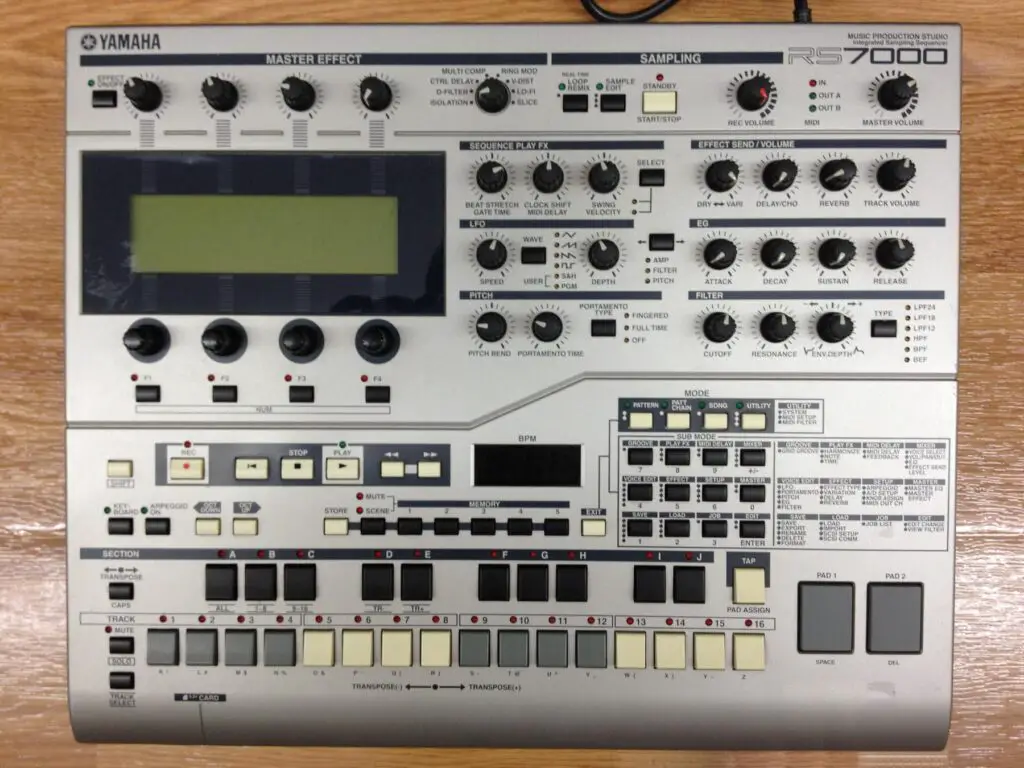Are you tired of being limited by expensive software and proprietary systems in your music production journey? Do you want to explore a new world of possibilities without breaking the bank? If so, you are in luck. In this article, we will be delving into the world of music production with Linux. Yes, Linux – the open-source operating system that is known for its flexibility and affordability. We will be exploring how you can use Linux to master your music production skills and create professional-grade tracks that rival those made on expensive software. Get ready to unleash your creativity and take your music production skills to the next level with our definitive guide to mastering music production with Linux.
Table of Contents

Why Linux for Music Production? Exploring the Benefits
Linux for Music Production is becoming increasingly popular among producers, musicians and audio engineers. The platform offers a number of benefits that make it an attractive alternative to proprietary software. Firstly, it’s free, meaning you can save money on expensive licenses and invest more in your music. Secondly, Linux is known for its stability and robustness, especially when compared to other operating systems used in music production. Thirdly, the open-source nature of Linux allows users to customize their system according to their own needs; this means you’re not limited by the restrictions imposed by commercial software companies.
Additionally, Linux-based systems are highly modular which makes them ideal for integrating with hardware commonly found in recording studios such as preamps or digital mixers. Finally, because most Linux distributions come bundled with large repositories filled with free/open source software dedicated specifically towards audio production (which we’ll explore further later on), everything you need is already available at your fingertips – without needing any additional downloads!
Getting Started with Linux: A Beginner’s Guide to Music Production
Linux for music production may seem daunting at first, but it’s actually quite accessible. The first step is to choose a Linux distribution that suits your needs. Ubuntu Studio is a popular choice as it comes pre-installed with many audio production tools. Once you have your distribution set up, you’ll need to install a digital audio workstation (DAW). Ardour and LMMS are two popular options that offer a range of features for recording, editing, and mixing audio. You’ll also want to install plugins such as LADSPA and LV2, which provide additional effects and instruments. Finally, make sure your hardware is compatible with Linux and configure your audio settings to ensure low latency and high quality sound. With these basics in place, you’ll be ready to start creating music on Linux!
Essential Tools and Software for Music Production on Linux
Ardour is a popular digital audio workstation (DAW) that runs on Linux. It has a user-friendly interface and supports a wide range of audio formats. Audacity is another popular open-source audio editor that can be used for recording, editing, and mixing audio tracks. It has a simple interface and supports various plugins for added functionality.
For virtual instruments, ZynAddSubFX is a powerful software synthesizer that can create a wide range of sounds. It has an intuitive interface and supports multiple synthesis methods. DrumGizmo is another great tool for creating realistic drum sounds in your productions.
For effects processing, Calf Studio Gear offers a suite of plugins including compressors, EQs, and reverbs. They are easy to use and can add depth and character to your tracks. LSP Plugins also offers a range of high-quality plugins for mixing and mastering.
Overall, there are many powerful tools available for music production on Linux, allowing users to create professional-quality music without breaking the bank.

How to Optimize Workflow and Productivity with Linux in Music Production
Customizing Your Linux Setup for Music Production Efficiency
To maximize your music production with Linux efficiency, it’s important to tailor your system to fit your workflow. Start by optimizing your audio settings, such as tweaking buffer sizes and sample rates to reduce latency. Utilize keyboard shortcuts and hotkeys within your Digital Audio Workstation (DAW) for quick access to commonly used functions.
Another way to boost productivity is through the use of plugins and scripts that automate repetitive tasks or add new functionality. Customize toolbars and menus in your DAW for easy navigation, create templates for frequently used project types, and set up virtual instruments and effects racks to streamline sound design.
With a little bit of experimentation and customization, you can truly harness the power of Linux for music production, creating a personalized setup that caters to your unique needs as an artist or producer.
Streamlining Workflow with Linux Audio Tools and Plugins
One of the major advantages of using Linux for music production is the vast array of audio tools and plugins available. Streamlining workflow and increasing productivity can be achieved by utilizing these tools effectively. For example, JACK (Jack Audio Connection Kit) allows for seamless integration between different audio applications, while Ardour provides a comprehensive digital audio workstation (DAW) with advanced editing capabilities. Additionally, plugins such as Calf Studio Gear and LADSPA (Linux Audio Developer’s Simple Plugin API) offer a wide range of effects and processing options. By mastering these tools, Linux users can optimize their workflow and achieve professional-quality results in their music production endeavors.
Maximizing Productivity with Keyboard Shortcuts and Automation in Linux
One of the key advantages of using Linux for music production is the ability to customize your workflow and increase productivity through keyboard shortcuts and automation. By assigning frequently used commands to specific keys or creating macros for repetitive tasks, you can streamline your workflow and save valuable time. Some popular tools for creating custom shortcuts and automation in Linux include xbindkeys, AutoKey, and Keyboard Maestro. With these tools, you can create complex workflows that automate tasks such as mixing, mastering, and exporting tracks with just a few keystrokes. Maximizing productivity with keyboard shortcuts and automation is essential for any music producer looking to optimize their workflow on Linux.
Troubleshooting Common Issues in Linux Music Production and Finding Solutions
When it comes to music production with Linux, there are bound to be some common issues that arise. One of the most common is compatibility with hardware and software. However, there are several solutions available to troubleshoot these issues. One is to ensure that all drivers are up-to-date and compatible with your Linux distribution. Another is to explore alternative software options that may work better with your hardware. Additionally, joining online forums and communities can provide valuable insight and support from other Linux music producers who have faced similar challenges. By staying proactive and seeking out solutions, you can optimize your workflow and productivity in Linux music production.

Mixing & Mastering Techniques using Linux-based DAWs
Optimizing Your Linux-based DAW for Professional Mixing & Mastering
To achieve professional mixing and mastering results with Linux-based DAWs, it’s crucial to optimize your setup for performance and efficiency. Low-latency audio is essential for real-time monitoring and processing, so make sure to use a kernel optimized for audio production. Additionally, proper gain staging is key to achieving a balanced mix, so pay close attention to levels throughout the signal chain. Utilize the built-in EQ, compression, and reverb plugins in your DAW, or explore open-source options like Calf Studio Gear or LSP plugins. Finally, take advantage of automation features to fine-tune your mix and add movement to your tracks. With these techniques and tools, you can achieve professional-level mixing and mastering with Linux-based DAWs.
Advanced EQ and Compression Techniques for Linux-based Music Production
In order to take your music production with Linux to the next level, it’s essential to master advanced EQ and compression techniques. The key to great mixing and mastering is finding a balance between all of the different parts of your track. One technique you can use is called “sidechain compression,” which allows you to emphasize certain elements in the mix by compressing others. Another important tool for Linux-based music production is a parametric equalizer, which gives you more precise control over frequency ranges than a regular equalizer. With these tools and techniques under your belt, you’ll be able to create professional-sounding tracks on any platform!
Maximizing Loudness without Sacrificing Sound Quality in Linux-based Mixes
To maximize loudness without compromising sound quality in Linux-based mixes, it’s important to understand the limitations of human hearing and the dynamic range of different playback systems. Use a limiter plugin with caution, as aggressive limiting can result in distortion or pumping artifacts. Instead, focus on optimizing levels during tracking and mixing stages to preserve headroom for mastering. Consider using compression for levelling individual tracks instead of relying solely on faders. Experiment with parallel processing techniques to add density and weight without sacrificing clarity. Ultimately, achieving optimal volume is about finding the right balance between perceived loudness and musicality.
Mastering the Art of Reverb and Delay in Music Production with Linux
Reverb and delay are crucial effects in music production with Linux. To achieve a professional sound, it’s important to master the art of using these effects. One key phrase to keep in mind is “wet/dry balance,” which refers to the ratio of the effect’s volume compared to the original sound. Another important phrase is “tail length,” which determines how long the effect lasts after the original sound stops. Experimenting with different settings and combinations of reverb and delay can add depth and dimension to your tracks. With Linux-based DAWs, there are many open-source plugins available to help you achieve the perfect reverb and delay effects for your music production needs.

Troubleshooting Common Issues and Errors in Music Production on Linux
Common issues and errors can be frustrating obstacles when working on music production using Linux. Having a basic understanding of the most common issues and errors, such as audio dropouts, latency problems, driver conflicts or missing dependencies, can save you time and headaches in the long run.
One solution to audio dropout is increasing your buffer size. This will allow more data to load before playback begins reducing interruptions. Another option is getting an external sound card, which may help minimize interference with other system components.
For latency problems, consider tweaking your JACK settings or turning off unnecessary background processes while working on music production.
If you encounter any difficulties with software installation or updates, check for missing dependencies that might prevent proper functionality. In case of dependency error messages make sure that you have installed all required packages based on a particular package manager used by your distribution.
In summary, troubleshooting Linux-based music production requires patience and critical analysis skills to identify potential sources of error and take action accordingly.

Advanced Tips and Tricks: Elevating Your Audio Quality with Open-Source Plugins
Open-source plugins have become increasingly popular among music producers on Linux. Not only do they provide an affordable alternative to proprietary plugins, but many of them are also powerful and user-friendly. LV2 is a widely used plugin standard in the open-source community that supports a wide range of effects, instruments, and processors. One notable LV2 plugin is Calf Studio Gear, which offers dynamic processing, filters, distortion, modulation effects, and much more.
For those looking to elevate their audio quality even further, there are several advanced tips and tricks available. For instance, utilizing real-time kernel can improve overall system performance for smoother audio playback without any glitches or dropouts. Another way to improve sound quality is by using libraries like LADSPA (Linux Audio Developer’s Simple Plugin API) or JACK (JACK Audio Connection Kit), which can help minimize latency issues.
Lastly,TAL-Reverb-4 is another highly rated reverb plugin that works exceptionally well across different genres while providing exceptional features such as pre-delay options,time response graph display,lfo parameters and stereo width control among others . These tips may require some technical expertise; however,take time to understand how these advanced techniques work in Linux-based DAWs can potentially revolutionize your final output-quality!
In conclusion, Linux is a powerful platform for music production that offers numerous benefits over other operating systems. With the right tools and software, you can create professional-quality music on Linux and optimize your workflow for maximum productivity. Whether you’re a beginner or an experienced producer, this definitive guide has everything you need to know to get started with music production on Linux.
We hope this guide has been helpful in your journey towards mastering music production with Linux. If you want to learn more about this topic or explore other areas of music production, be sure to check out our other content. Thanks for reading!
Q & A
Who uses Linux for music production?
Music producers and audio engineers who prefer open-source software.
What software is used for music production on Linux?
Popular options include Ardour, LMMS, and Rosegarden.
How does Linux compare to other OS for music production?
Linux offers stability, customizability, and low latency for audio processing.
What hardware is compatible with Linux for music production?
Most audio interfaces and MIDI controllers have Linux drivers available.
How can I learn music production on Linux?
Online communities, tutorials, and forums are great resources for learning.
But isn’t Linux too complex for music production?
With the right software and knowledge, Linux can be just as user-friendly as other OS.


